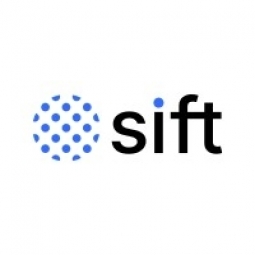Customer Company Size
Large Corporate
Region
- America
Country
- United States
Product
- Sift
Implementation Scale
- Enterprise-wide Deployment
Impact Metrics
- Productivity Improvements
- Cost Savings
Applicable Functions
- Business Operation
Use Cases
- Fraud Detection
About The Customer
KSL started off as a television company within Deseret Management Corporation, gaining affiliation with NBC in the 1990s. As part of the overall brand, KSL Classifieds was built in the late 1990s to offer Utah residents a local online classifieds platform to complement the community news product. In 2009, Deseret Digital Media was formed to separate digital properties from traditional radio and TV media properties. As part of this move, the DDM Marketplace business unit (within which KSL Marketplace resides) was created to further distinguish local commerce marketplace entities from the online media entities. The Marketplace currently sees over 235 million page views per month and is growing rapidly as KSL aspires to become a national brand. Unfortunately, with all of the success and attention, KSL’s classifieds platform also became a popular target for fraudsters. In response, they hired Eric Bright as Vice President of E-commerce and charged him with not only growing revenue, but also stamping out KSL’s fraud challenges.
The Challenge
KSL.com, a user-driven platform of both buyers and sellers, was suffering from an existential problem due to a growing percentage of fraudulent postings. Bad users were scamming legitimate users from all sides: publishing fake listings, taking over legitimate customer accounts, and running scams from hijacked accounts. Malicious users were also harassing the sellers of real listings, trying to scam them out of their goods and services. The main challenge Eric faced was not only finding and eliminating existing fraud, but also blocking bad users as they tried to re-access the site after one device or account was banned. KSL needed the ability to autoban bad users and repeat offenders. Fighting an imposing fraud rate of 75-80% in some of the more popular sections of the site, KSL’s sole fraud analyst wasn’t able to keep up with the demands placed on their internal fraud tools and manual review process.
The Solution
Hiring five additional people just to review fraud is expensive, so Eric started evaluating Sift’s capabilities as an alternative. He found that trialing the Sift solution was easy; the full integration took just six weeks and they started to see results immediately. With just a few weeks of labeling, the KSL team trained their customized model to be so accurate that they could confidently rely on Sift Score ranges to automatically approve, reject, and review transactions. Sift’s accuracy in pinpointing fraudsters allowed KSL to identify and shut down fraud faster than ever before. That meant the KSL team could focus their energies on the truly suspicious users, keeping good customers happy with quick approvals.
Operational Impact
Quantitative Benefit

Case Study missing?
Start adding your own!
Register with your work email and create a new case study profile for your business.
Related Case Studies.

Case Study
Largest Production Deployment of AI and IoT Applications
To increase efficiency, develop new services, and spread a digital culture across the organization, Enel is executing an enterprise-wide digitalization strategy. Central to achieving the Fortune 100 company’s goals is the large-scale deployment of the C3 AI Suite and applications. Enel operates the world’s largest enterprise IoT system with 20 million smart meters across Italy and Spain.

Case Study
KeyBank's Digital Transformation with Confluent's Data in Motion
KeyBank, one of the nation's largest bank-based financial services companies, embarked on a national digital bank initiative following the acquisition of Laurel Road, a digital consumer lending business. The initiative aimed to build a digital bank focused on healthcare professionals looking to refinance student loans and buy homes. A significant challenge was reducing the time to market for new products by democratizing data and decoupling systems across the IT landscape. Like many large enterprises, KeyBank had a variety of vendor applications, custom applications, and other systems that were tightly coupled to one another. New projects often required developing specific point-to-point integrations for exchanging data, which did not address the needs of other downstream systems that could benefit from the same data.
Case Study
BharatPe: Leveraging Google Cloud for Enhanced Data Analytics and AI to Promote Digital Payments
BharatPe, a fintech company founded in 2018, aimed to make digital payments more accessible for over 10 million small offline merchants and kirana store owners in India. However, the company faced challenges in managing the massive amounts of data generated daily from payment processing to business analysis. Prior to using Google Cloud, BharatPe managed its legacy data warehouse with limited capacity to run a large number of queries. The company ran key performance indicator (KPI) reports, without the ability to understand real-time data patterns. Loading three months of data for quarterly reports took more than 30 minutes on the legacy system, and in some cases, queries failed because the system could not scale to support analytical needs. Additionally, BharatPe operates in a multi-cloud environment for disaster recovery and needed a data platform that could run queries against data, regardless of where it resides.
Case Study
Barclays Enhances Customer Experience with IBM BPM Solution
Barclays, a global bank operating in over 50 countries and serving nearly 60 million customers, faced a significant challenge in improving and streamlining the customer experience. The bank's relationships with customers were multifaceted, with customers engaging with the bank through various channels such as mobile, online, and branch locations. The bank had identified 400 different customer journeys, and the challenge was to align these across the enterprise and improve them in a way that positively impacted customers quickly. The director of operations at Barclays, Mike Gamble, recognized the need to transform the bank's processes around customer journeys. He aimed to enhance the understanding of how various functions contribute to delivering customer experiences and then expedite the rollout time of these new processes to achieve the end goal for the customer.
Case Study
Bank BRI: Revolutionizing Financial Inclusion in Asia with Digital Banking
Bank Rakyat Indonesia (Bank BRI), one of the largest banks in Indonesia, was faced with the challenge of increasing financial inclusion among unbanked Indonesians. The bank had an ambitious target of having 84 percent of Indonesians participating in the banking system by 2022. However, the bank's legacy technologies were proving to be a hindrance in achieving this goal. Each of the bank's products had their own public APIs, which were difficult to manage, secure, and monetize. Additionally, the process of onboarding new partners using host-to-host and VPN technology was time-consuming, taking up to six months. The bank also faced the challenge of reaching a largely rural population, with an estimated $8.3 billion in currency being held outside the banking system.
Case Study
Stabilizing an Avalanche of Data: Comcast's Journey with Data360 Analyze
Comcast Corporation, the second largest broadcasting and cable television company in the world by revenue, was facing significant challenges due to the volume and variety of operational and billing data. With over 20 million customers across 40 states, the company needed to establish standardized processes and automate data flows to overcome a wide range of billing, finance, compliance, supply chain, and marketing challenges. In 2009, the company was dealing with massive amounts of data that were causing major revenue assurance challenges. The customer billing review interface required the processing of a billion records every month, within very tight timeframes. The company’s decentralized accounting and finance operations, with 20 different regions and 30 different accounting practices, further compounded these issues.







